Construction Basics: Stud Spacing and 16 On Center
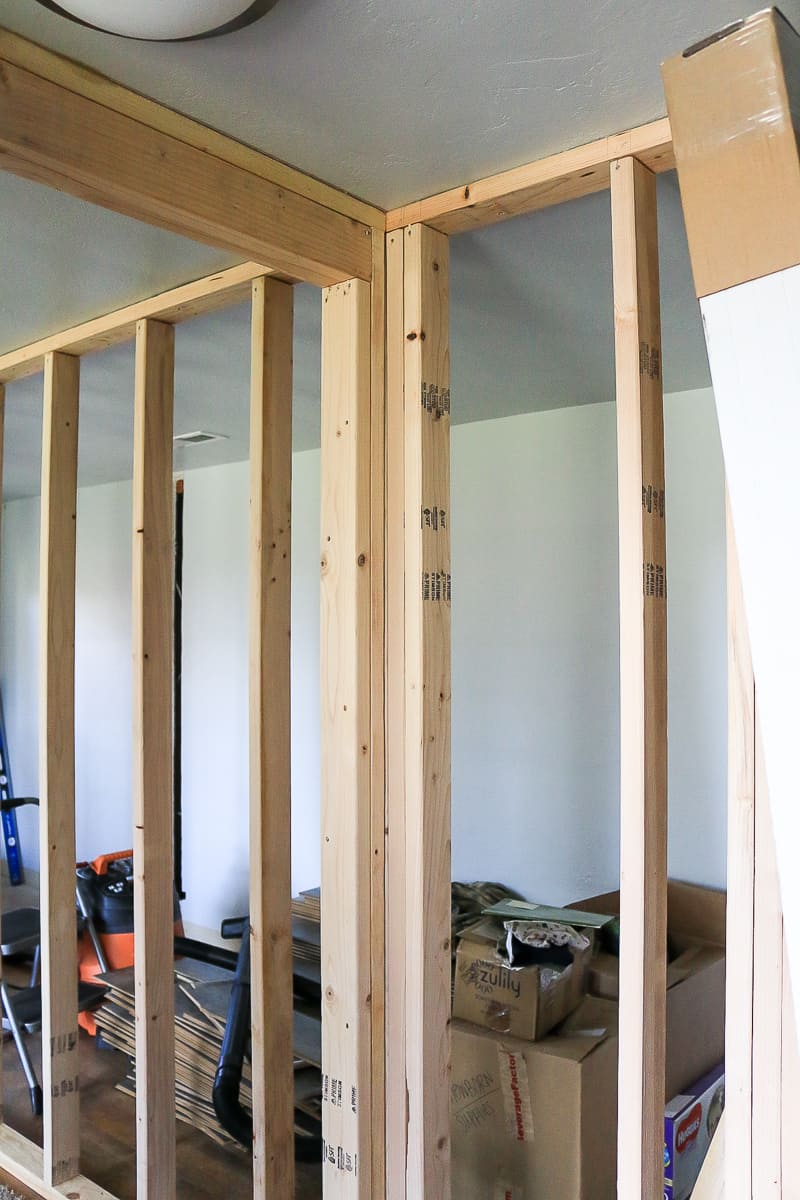
Have you ever wondered " how far apart are studs" and been confused when you heard or read "16 on center" or "16 oc"? Today we're taking it back to the basics and explaining exactly what on center (oc) means in the construction and home renovation world and how far apart the studs are in your wall.
Framing a wall is one of the most basic and initial steps to a structure. However, when done incorrectly it is a mistake that ruins the rest of the build.
One important aspect of any wall is the specific stud spacing. This can make or break your structure.
You may have heard framing is done “16 oc” or “16 on center”. No need to get confused with this lingo! We’re going to break it down for you in this article all about stud spacing in construction.
What does 16 on center mean?

16 on center or 16 oc simply means you place the center of the stud every 16 inches.
16-inch stud spacing is the industry standard for residential wall framing. There are certain exceptions to this rule but this is the standard. The reason for this is structural but also because materials are made in 8ft and 16ft lengths.
For example, drywall is attached directly to the studs and comes in 8-foot lengths. When you place your studs 16 inches on center the ends of the drywall butt up against each other over the stud, giving you a convenient place to screw the drywall into place.
Stud Spacing Diagram
To detail the 16 on center concept further, here’s a handy little diagram.
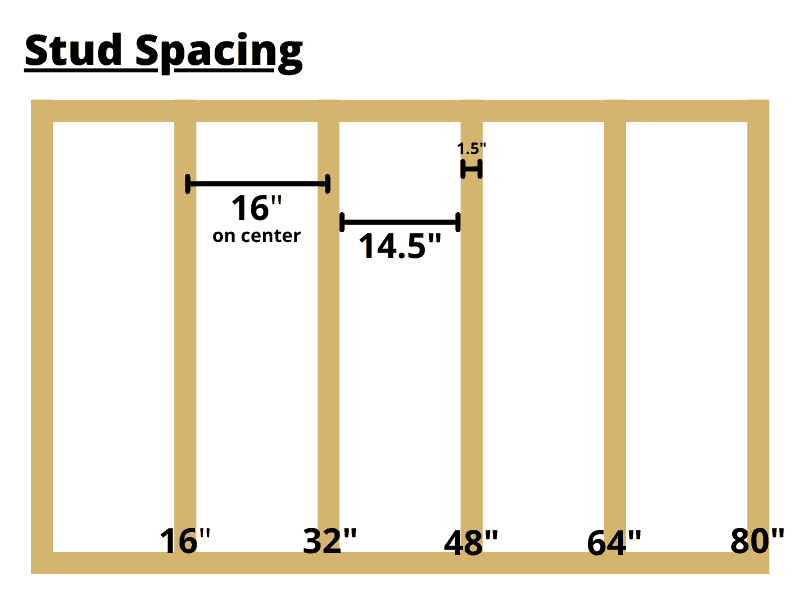
Stud spacing FAQs
What does “on center” mean in construction?
On center just means that the center of the stud should be placed every 16 inches when framing out the wall. Rather than measuring the distance between the edges of the studs, you measure the distance from the center of one stud to the other center of another stud.
How far apart are studs in old houses?
Stud spacing in older homes is similar to that of newer homes. Studs should still be 16 inches apart on center in old houses.
Why would studs be spaced out 24 inches?
Typically this is done in outbuildings or other structures that aren’t homes. There are a lot of restrictions using 2×4 studs spaced at 24 inches on center so typically we won’t see this spacing often for residential construction.
Do I need to hang heavy items on wall studs?
You may be heard that when you hang something up on a wall that you need to make sure you’re attaching it to a stud in the wall. This is definitely best practice when it comes to anchoring items to a wall, hanging heavy pictures, and floating shelves.
What’s the best way to find a stud in a wall?
Anytime you are hanging a picture up on a wall, you should first find a stud in the wall to make it more secure.
A quick and easy way to find a stud is with a stud finder, but they can be unreliable from time to time.
The best way to find a stud in a wall is to measure 16″ from the corner of the wall you are trying to find the stud on. Follow up with a stud finder to confirm before drilling a hole or making a nail hole. This will give you a really good chance to find the stud.
How much weight can drywall hold without a stud?
Using just a nail I would hang no more than 5-10 lbs. There are many different fasteners and anchors specifically designed to help hold far more weight when a stud is unavailable.
How wide are studs?
Studs are always 1.5 inches wide. Their depth can be 3.5, 5.5, or even 7.5 inches depending on the wall.
Wall studs are made with “2 by” lumber, meaning either a 2×4 (most common), 2×6, or even in some rare cases, 2×8. However, that doesn’t mean that the wood is actually 2 inches wide. Nominal vs dimensional lumber can be confusing, learn more about confusing lumber dimensions here.
How do you measure 16 on center when framing a wall?
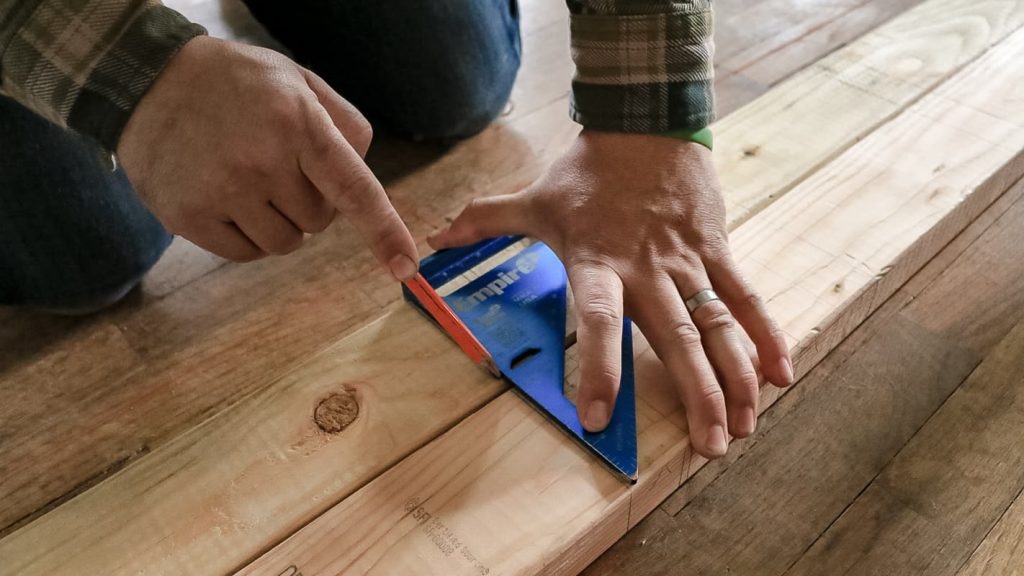
Fun fact, tape measures highlight every 16 inches red to help builders and DIYers put this standard into practice.
Before you start building a wall, be sure to get a tape measure and start marking up your bottom and top plates. The best way to do this is to mark the plate every 16 inches. This will be the center point on the studs.
Now you can go back and measure 3/4″ on each side of the 16″ marks because the studs are 1.5″ wide. These marks represent where the studs will go to space them 16 on center.
We usually mark in between the lines with an X to represent where the studs will go.
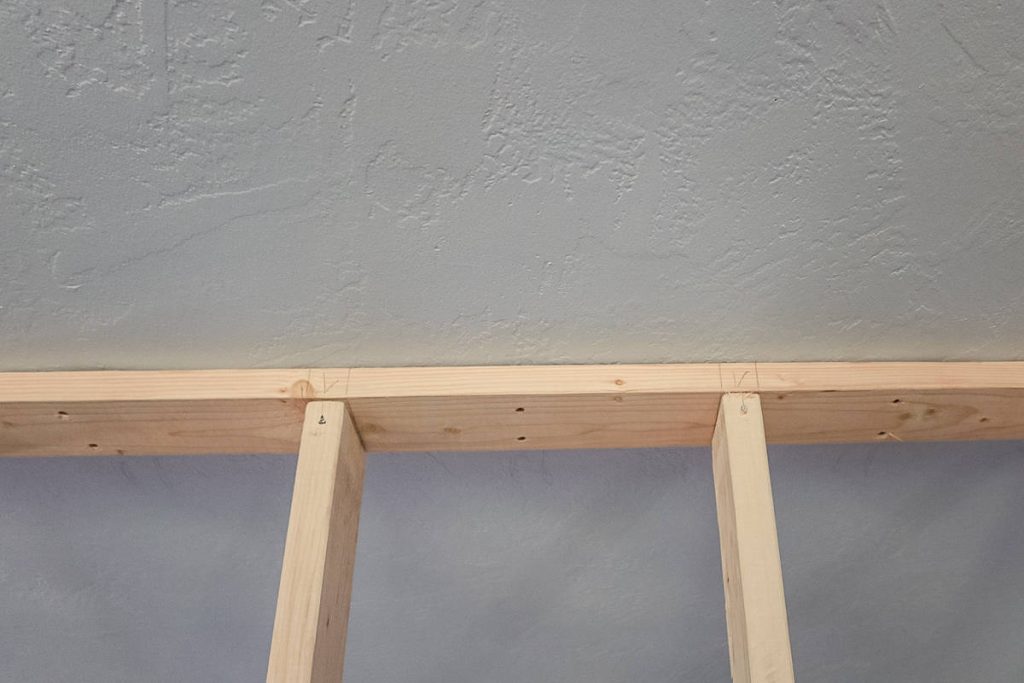
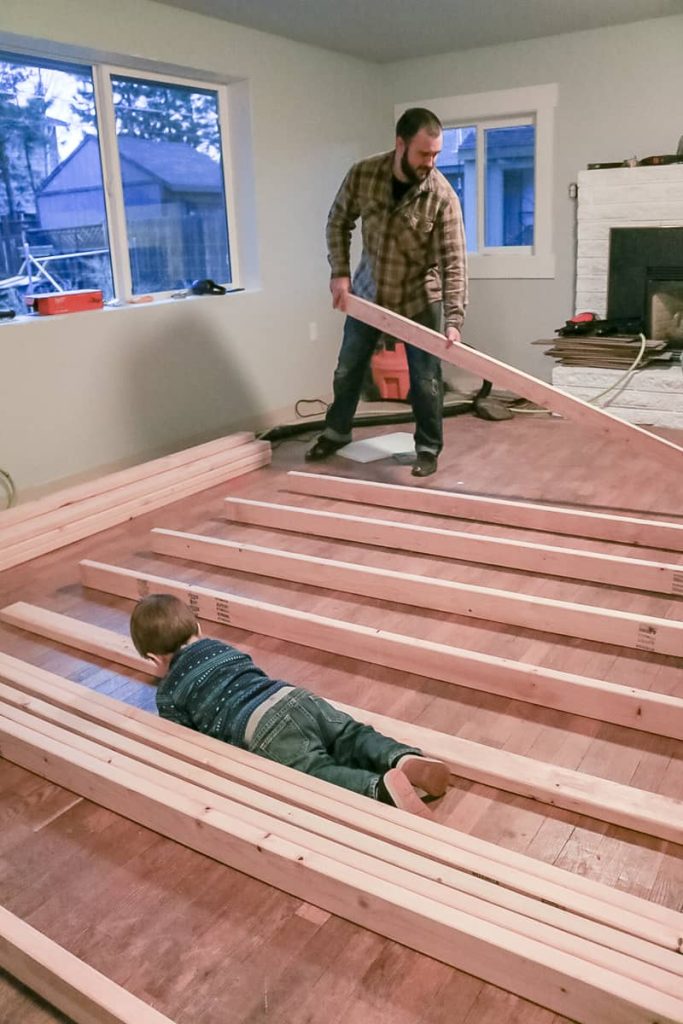
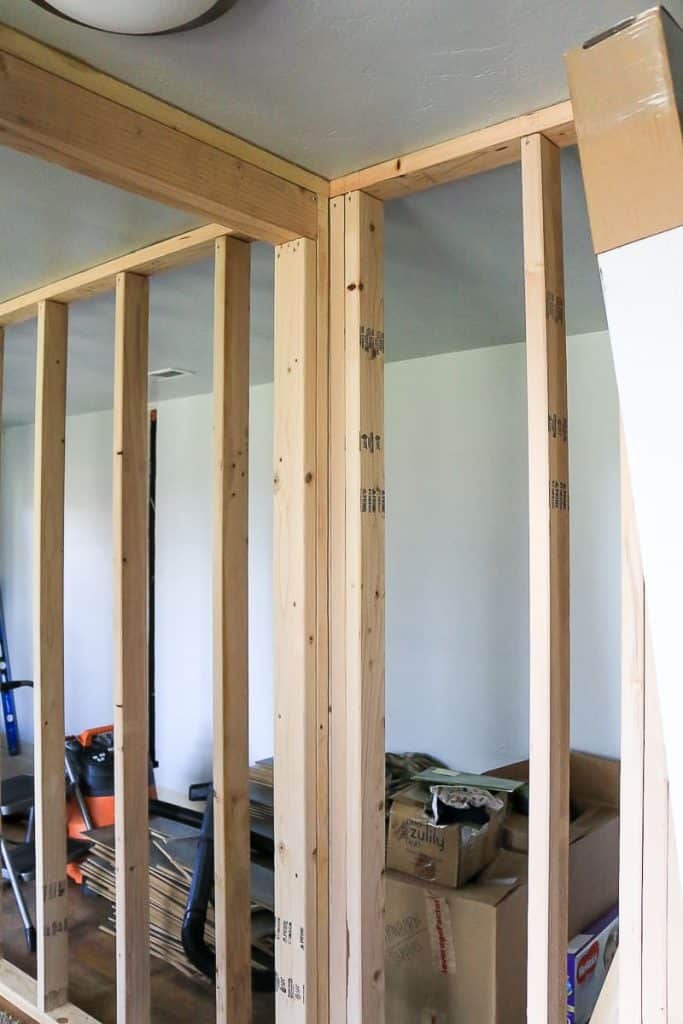
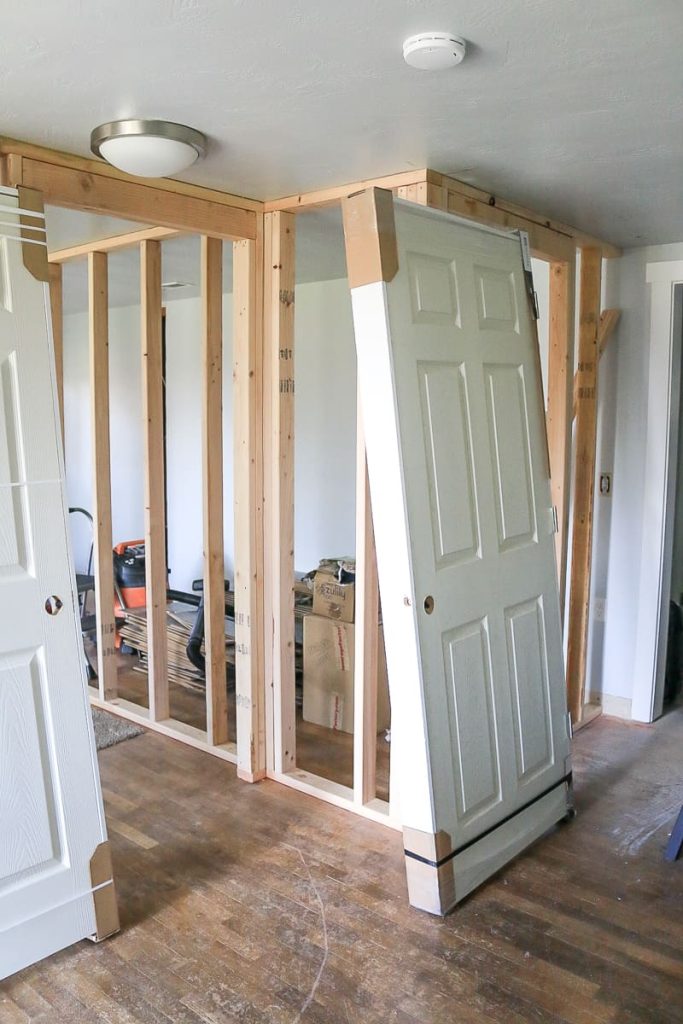
Further reading – If you want to learn more about the process of how to build a wall, check out this full tutorial. There’s a lot more to it than just figuring out stud spacing! If you need to add a door to your wall, read all about framing a door here.
If you go further in your renovation and woodworking journey you may hear of other applications of on-center. In certain situations, studs can be spaced as close as 12 inches on center and as far apart as 24 inches on center. But when it comes to the walls in your home, you can count on the stud space to be 16 inches on center.
Do you have any more questions about stud spacing and the on center definition?
Let us know in the comments below!


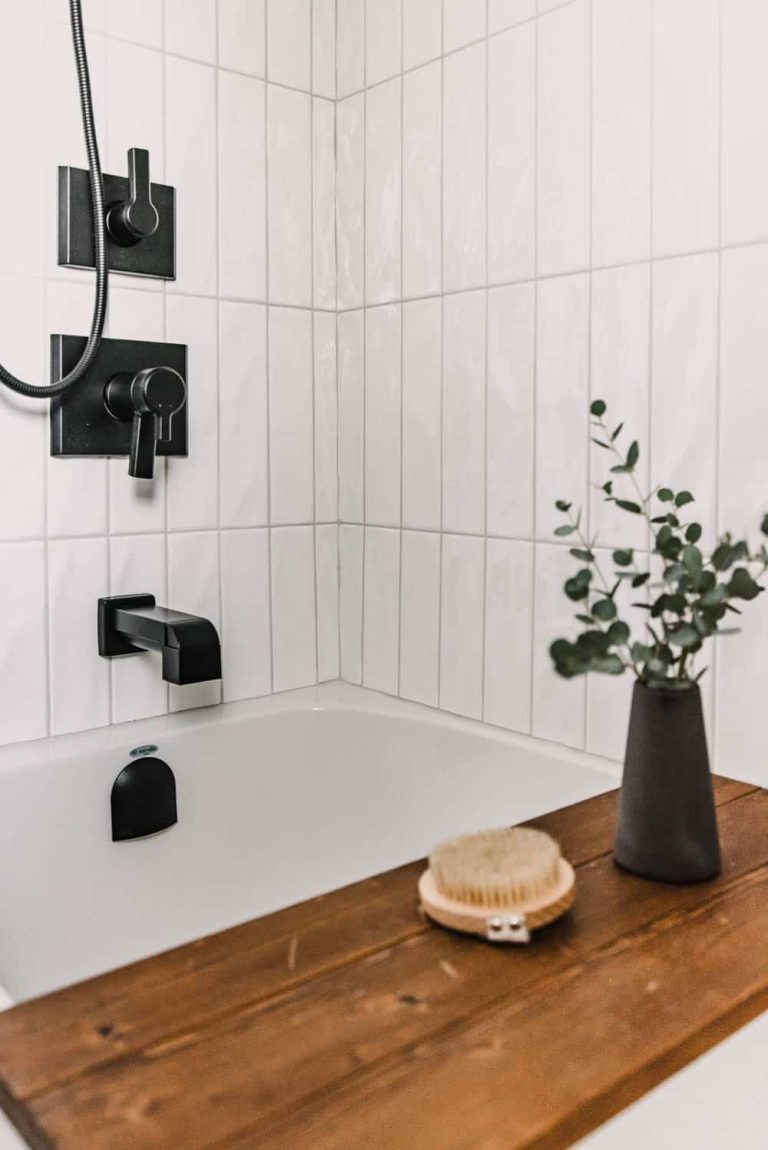




How does one make adjustments when the overall wall length is not a multiple of 16 in – as in 10 ft, 13 ft, or 9 ft 6 in? Do you start the 16″ centers from an adjoining wall and leave the odd measure at the free standing end (as in a wall that ends in an archway)? If the odd sized wall runs between 2 walls, do you start in the middle and split the odd distance at the 2 ends? Please help; all the example articles I see do not address non-standard length walls
When you are pulling layout for studs 16″ on center you start on one side of the wall to the other. You will end up with a shorter distance than the 16″ in your case by the archway. That way when your wall covering goes on you can follow that 16″ on center standard.
The opposite side will have a stud as a backer next to a wall or opening to which you can attach your wall covering. The idea here is that when you attach to a new wall or opening you know exactly where that last “off center” stud is because it’s at the end of your wall.
When you are pulling layout for studs 16″ on center you start on one side of the wall to the other. You will end up with a shorter distance than the 16″ in your case by the archway. That way when your wall covering goes on you can follow that 16″ on center standard.
The opposite side will have a stud as a backer next to a wall or opening to which you can attach your wall covering. The idea here is that when you attach to a new wall or opening you know exactly where that last “off center” stud is because it’s at the end of your wall.
Very helpful! Thanks. I love the spacing to be toddler-wide.
Haha, perfect measurement!
Appreciate the website!
In the paragraph about how much weight to hang without a stud, I believe you meant “Using just a nail I would hang [NO] more than 5-10 lbs.”
I have a question: Do you know if, in commercial construction with metal studs, they lay out the stud spacing starting at a corner/end – or do they work from the midpoint outward? I ask because when prepping for a flat panel display back box like this ( https://fsrinc.com/fsr-products/product/1898-pwb-320 ) the desired midpoint would actually be between studs, not ON a stud. Conference rooms, classrooms, lobbies, etc tend to like things centered.
Thanks for catching that typo and letting us know. I’ve adjusted it in the article! Metal studs are also typically spaced 16 inches on center (or in some cases 24 in on center) and the spacing should also start in a corner (vs midpoint outward). Magnetic stud finders work great for metal studs so maybe you can start with that to determine the stud locations before installing your box.
does anything change on short walls? I’m getting ready to frame around a 30″ vanity so one side wall will be 20.5″ wide and the back wall is 35.75″ wide. so 16″ oc puts one stud way at one side. On the back wall the one will fall about 2″ away from the center of the vanity where the electrical box for the light (which may almost be perfect for a 4″ round box nailed to if that’s used instead of one on a bar?)
The stud spacing won’t change even if the wall is shorter. If you need to add additional studs to the wall after you’ve framed it out 16 oc, you can do that for electrical boxes etc.